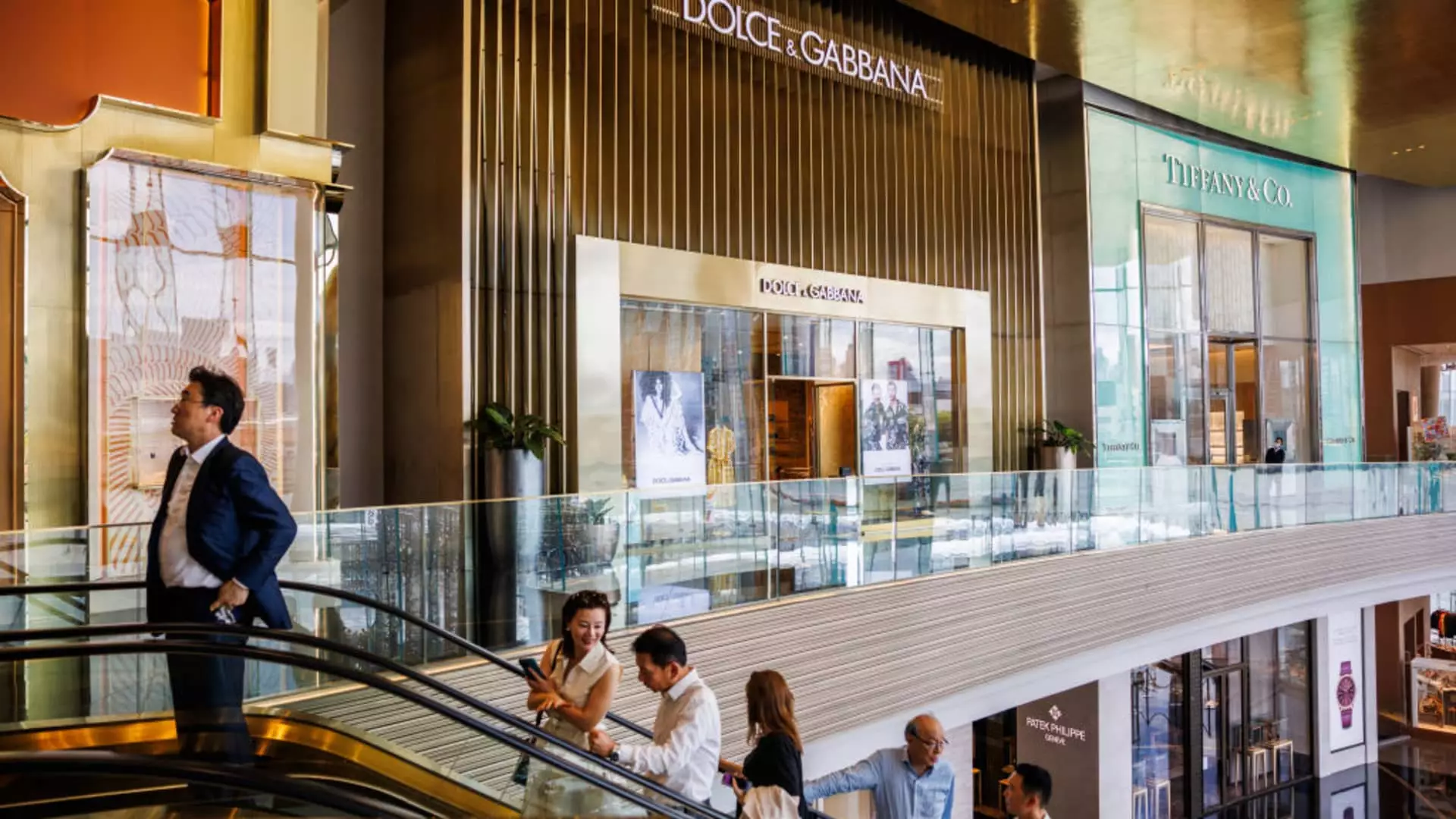For the first time in over a decade, the personal luxury goods market is experiencing noticeable deterioration, signaling an alarming shift in consumer behavior. As reported by Bain & Company, the convergence of macroeconomic uncertainties and weakening demand, particularly from China, leads to projections of diminished spending in the luxury sector. Items traditionally associated with personal luxury, including apparel, accessories, jewelry, and cosmetics, are seeing a retraction that raises questions about the sustainability and resilience of high-end brands in a volatile economic landscape.
Bain’s findings reveal that in 2024, the luxury market may contract by approximately 2%, attributed to increased costs and waning customer loyalty. This trend peaks as consumers retreat from splurging on high-ticket items, forcing brands to confront an unprecedented challenge. High-profile brands such as LVMH, Burberry, and Kering report underwhelming revenue that aligns with these consumer tendencies. This erosion in brand allegiance is particularly troubling, considering the financial ecosystem surrounding luxury goods where even the minutest fluctuations in customer preferences can yield profound implications on profit margins.
At the heart of this downturn is the pronounced decline in demand from China, which has long been considered a cornerstone for luxury consumerism. Following an extended period of recovery post-Covid-19, China’s economic rebound remains sluggish, further exacerbated by declining consumer confidence. The impact on luxury brands, including those that previously rode out economic storms like Richemont, reveals a stark reality: even powerhouse brands are not immune to the fluctuations in consumer demand. Bain’s report captures this sentiment, pinpointing that a progressive downturn in spending in China poses risks for the global luxury market’s health moving into 2025.
In juxtaposition to the chaos in China, luxury spending in Europe and the U.S. has shown signs of life, suggesting a complex recovery landscape. Analysts predict slight growth for the sector overall in the coming year, if unencumbered by adverse economic factors. Japan stands out as a market benefiting from favorable currency dynamics, trailing a positive spending trajectory. Despite the uncertainty, select segments, including luxury cars, fine wines, and gourmet experiences, continue to thrive, allowing for a glimpse of hope amid a predominantly challenging outlook.
Luxury travel emerges as a particularly vibrant area, as consumers appear more inclined to invest in memorable experiences rather than tangible products. Additionally, smaller personal luxury items, such as eyewear and beauty products, see a revival as shoppers increasingly lean toward smaller indulgences. This shift reveals a nuanced understanding among consumers who seek personal gratification even when conservative with larger purchases.
Grappling with a consumer landscape rife with shifting loyalties, luxury brands must recalibrate their strategies to remain relevant. Bain’s report highlights the alarming statistic that roughly 50 million luxury consumers have exited the market in the past two years, presenting a clear call to action for brands. Claudia D’Arpizio, a key contributor to the study, emphasizes the need for brands to innovate and engage in meaningful conversations with their audience. Particularly for younger consumers in the Gen-Z demographic, brands must creatively redefine their value propositions and prioritize authentic human interactions.
From redefining engagement strategies to emphasizing creativity in product offerings, luxury brands stand at a critical crossroads. Survival in this evolving market climate requires agility and an unwavering commitment to understanding changing consumer sentiments. To cultivate loyalty and recover lost ground, luxury brands must accentuate personalized experiences, ensuring that they resonate with a discerning and dynamic customer base.
As the luxury sector contemplates its future amidst these economic shifts, the imperative for brands is clear. Whether through innovative approaches to customer engagement, recalibrating marketing strategies, or emphasizing values that resonate with younger consumers, luxury brands must adapt to the landscape of uncertainty. The experiences cultivated in the coming year will unmistakably shape the trajectory of the luxury goods market, underscoring the need for resilience in an era defined by complexity and change.

